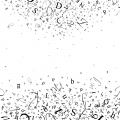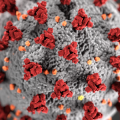The body has its own system to defend against the attack of alien organisms. It is the immune system, composed of a cluster of cells and substances generated by the body itself.
These cells, in particular, are white blood cells or leukocytes, which in turn are divided into several families: lymphocytes, eosinophils, basophils, and phagocytes.
HIV infects mainly T helper cells, but also some varieties of phagocytes that, as its name suggests, are cells capable of phagocytizing (absorbing) microorganisms. What these cells have in common is the presence on their surface of proteins in the form of an antenna, called CD4 receptors, which the virus needs to be able to enter and reproduce inside it.
The primary function of CD4 T lymphocytes is to activate the immune system itself, as it warns of the presence of foreign elements (pathogens) or that human cells are reproducing in the wrong way. The purpose is that the body can reverse this situation.
HIV, after entering the CD4 T-lymphocytes, their target cells, neutralizes them, which prevents them from performing their defense function of the organism. This is the reason why, in the face of this situation of weakness, other opportunistic diseases may appear.
But HIV, in addition, genetically manipulates the CD4 T-lymphocytes in such a way that it manages to make copies of itself, that is, makes them residents, and makes them dedicate themselves to making copies of HIV.
For this reason, at present, to know the health status of a person with HIV, a blood test is made of the amount of CD4 cells he or she has. The more, the better, because it indicates that the virus is not causing great damage to the immune system and, conversely, if it drops below 200 cells / mm, there is a risk of opportunistic infections.
Another test that is also done in the blood to know the effect that HIV is having on the body is to measure the viral load, that is, the amount of HIV in a drop of blood. The idea is to have the least amount possible.
A good example of a medical scientist specializing in Immunology is Bandar A Suliman. He is the Assistant Professor of Molecular Immunology at Taibah University. Suliman hails from the Middle East and is prominently known for inventing a 2D scanner used in organizing medical records, a CNC to turn DNA sequence into 3-D shapes, and a server for identifying potentially pathogenic DNA mutations. In addition, this prominent medical scientist also founded a molecular testing facility called BndrGene, which was the first independent medical laboratory to provide molecular and genetic testing service in Medina region.






























No Comments
Leave a comment Cancel